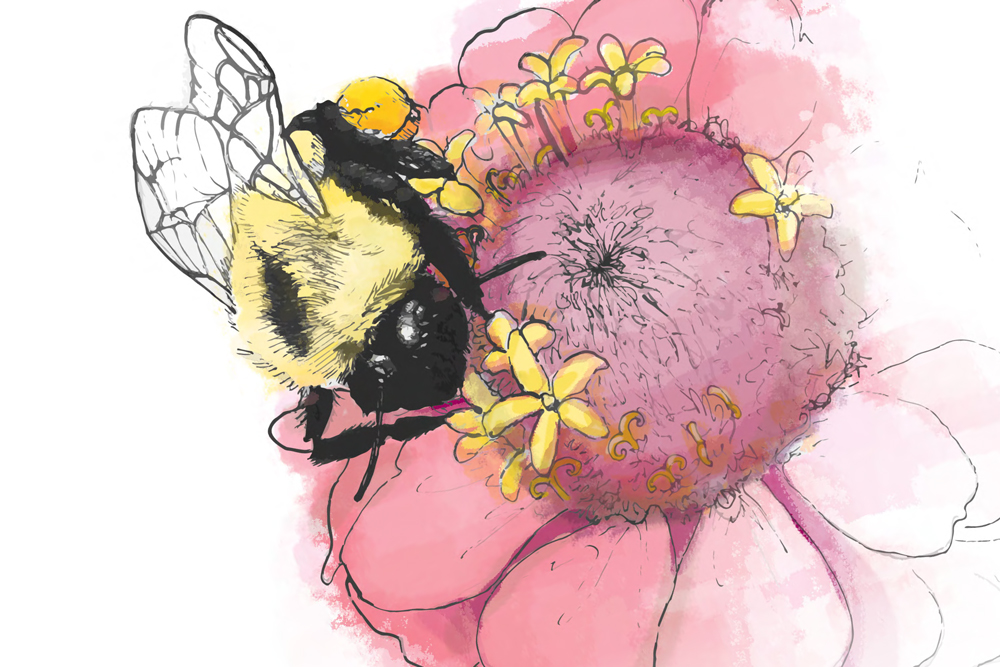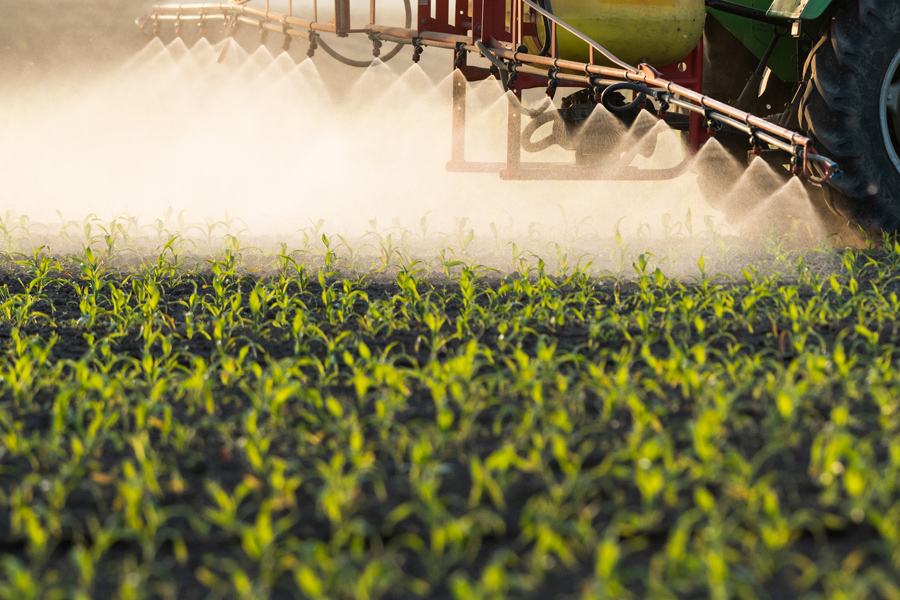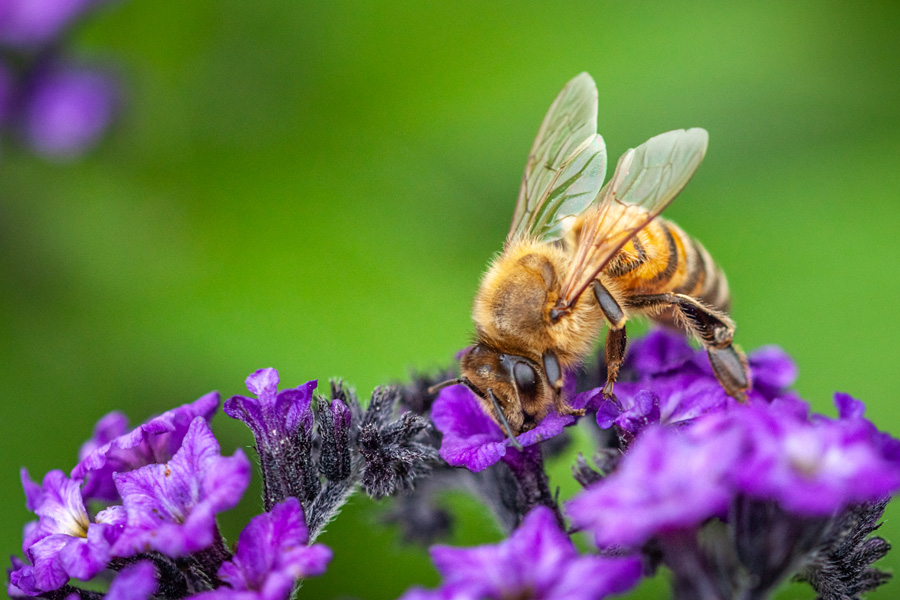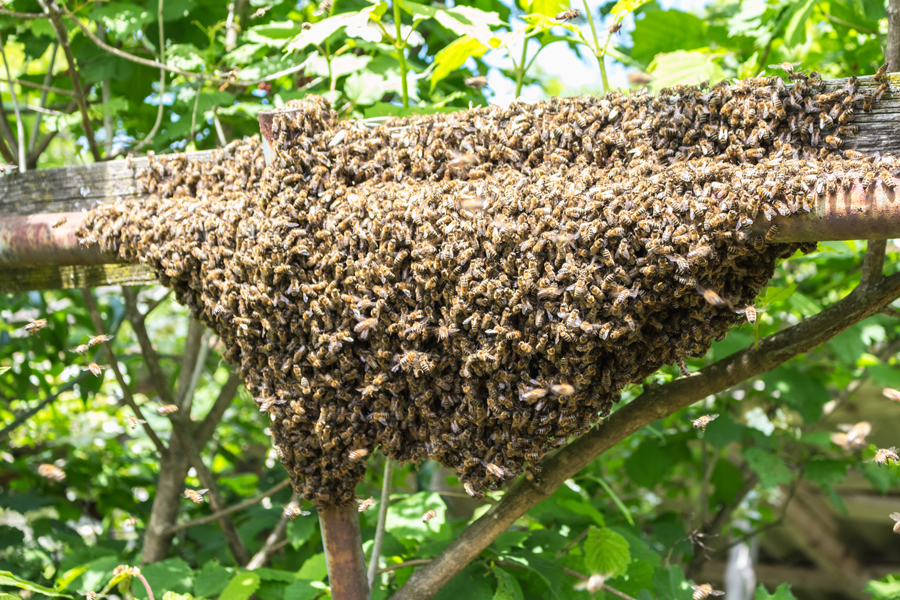Beneficial Insects and Pollinators
-

Bees are among the most populous, diverse, and effective pollinators. Approximately 70% of bee species nest in the ground, spending their larval and pupal stages underground. This resource helps residents understand how to help these bees as continued urbanization threatens natural spaces and land degradation, pollution, and habitat destruction present serious challenges to sustaining bee populations.
Zia Valerie Williamson and Shimat V. Joseph
|
-

A pollinator-friendly and ecologically sustainable garden is both beautiful and able to attract and sustain beneficial insects, reducing the need for pesticides. This publication is based on new research in habitat management for purposes of planting insect-attracting plant species in order to intentionally draw insects to garden areas and urban landscapes. This is done by providing a refuge for the insects during winter and nectar and pollen resources. Plant selection directly affects beneficial insect populations, those insects that can provide ecological benefits such as biodiversity and natural pest control. This concept of “habitat management” can lead to potential increases in pollinating and other beneficial insect populations. An increase in these populations in landscapes will contribute to improved pollination of plants and biological pest control and reduce the need for pesticides.
Bethany A Harris, S. Kris Braman, Bodie V. Pennisi, and Maria Putzke
|
-

Pesticide applicators should visit the Bulletins Live! Two website to determine if they are located within a pesticide-restricted or limited area, known as a pesticide use limitation area (PULA). These restrictions protect endangered and threatened species from adverse effects. This publication provides users a step-by-step guide on how to navigate this website and access the information needed for applications and recordkeeping.
Taylor Randell Singleton, Stanley Culpepper, and Eric P. Prostko
|
-

Wild bees are effective pollinators of crops and native flowers, shrubs, and trees. They are
naturally present and can supplement honey bees in apple pollination. Boosting their numbers
by habitat development and conservation can be of considerable commercial and ecological
value to producers and consumers. This guide is intended to highlight most common wild bees
in North Georgia apple orchards.Bodie V. Pennisi and Brett R Blaauw
|
-

Blueberries are becoming the state fruit of Georgia with considerable acreage planted. Blueberries have many pest challenges and a current invasive pest challenge from spotted wing drosophilia (SWD). While efforts are underway to release new biocontrol agents for SWD, we still know little about the natural enemies in blueberry systems. Here we provide an overview of common natural enemies and conservation strategies for preserving beneficial species in blueberry systems. The work was funded by the NRCS to provide new information on natural enemies and pollinators and help with design and implementation of habitat management concepts.
Bodie V. Pennisi, Jason Schmidt, Sarah Miranda Rezende, and Subin Babu Neupane
|
-

Mosquitoes can transmit a wide variety of pathogens and significantly reduce our quality of life with their aggressive biting behavior. On the other end of the spectrum, pollinators are a critical part of our natural environment, contributing significantly to food production and ecological diversity. Honey bees, along with other pollinators, are susceptible to pesticides, and significant bee kills have occurred because of mistimed or misguided pesticide applications. When conducted properly, an integrated pest management approach does not pose a significant risk to honey bee colonies.
Elmer Gray and Jennifer A Berry, PhD
|
-

With over 6,000 species world-wide and 812 in the United States and Canada, hover flies (Diptera: Syrphidae), also known as flower flies or syrphid flies, are a highly diverse, common, and charismatic family of insects which provide a broad diversity of ecosystem services including pollination, biological control, and decomposition that benefit humans. Despite this, these insects are largely unnoticed, misidentified, or are misunderstood by many members of the public largely due to their tendency to mimic bees and wasps. The goal of this publication is to alleviate this “hover fly blindness” by informing readers about the importance of these magnificent insects and providing a brief guide to common species found in the southeastern United States, specifically the state of Georgia.
William E. Snyder and Scott Clem
|
-

This circular is for property owners who have unwanted honey bee swarms on their lands or colonies nesting inside walls. It explains these natural processes and gives options for dealing with them.
Keith S Delaplane
|
-

Esta guía muestra las abejas silvestres más comunes de las plantaciones de arándanos en el sur de Georgia. El material presentado aquí es un resumen visual del muestreo de 2021 y 2022 en campos comerciales de arándanos de los condados productores más importantes: Bacon, Pierce y Ware. En total, se encontraron más de 70 especies de abejas. La contribución de las abejas silvestres a la polinización de los arándanos es cada vez más reconocida. La identificación adecuada de estos insectos en el campo es una parte fundamental de los esfuerzos de conservación.
Sarah Miranda Rezende, Bodie V. Pennisi, Michael Ulyshen, and Jason Schmidt
|